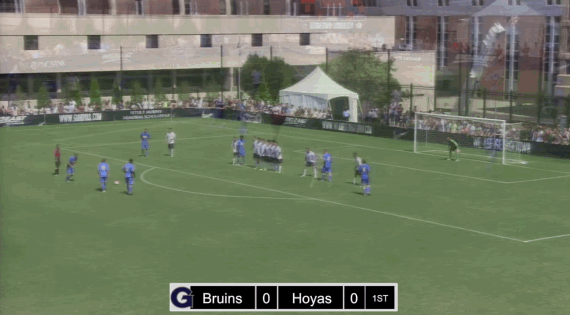cover photo belongs to Jesus Hidalgo
Congrats to EJ Proctor for winning the save of the year contest with an overwhelming 44%! Scroll down to see the clutch save!
Everybody Soccer is proud to announce the first ever NCAA Save of the Year award. We have fifteen saves but only one is worthy of earning the title "NCAA Save of the Year". Watch each save and then scroll to the bottom to vote. You can vote for just one or as many as you like, if you can't narrow done to one.
1. Erika Yohn (Purdue vs. Missouri)
Yohn dives over and around her fallen defender to clip the shot towards the post, then jumps on the rebound.
2. Julie Eckel (Tennessee vs. Virginia Tech)
Got to love the hands here. Somebody email Eckel to find out what glove brand she uses.
3. Caroline Casey (William & Mary vs. Georgetown)
The way Casey wouldn't have reached the shot is if it went five feet over the crossbar.
4. Micah Bledsoe (Lipscomb vs. Louisville)
Bledsoe tracks the ball well and goes against his momentum to make the save on the quick shot. It might not look tough but this is a play that most goalkeepers will whiff on.
5. Todd Morton (Delaware vs. Elon)
Two for the price of one. Morton goes high to stop the first shot then makes a Gordon Banks-esque save off the line to prevent the second.
6. JT Marcinkowski (Georgetown vs. UCLA)
Can't have a save of the year list without a free kick stop. The freshman goalkeeper does a good job to hold onto the ball as well.
7. Michael Breslin (UC Irvine vs. Creighton)
Breslin has a great stare down to make this truly in-your-face save. Breslin gets sets like a cowboy in the west and executes perfectly on the play.
8. Matt Bersano (Penn State vs. Indiana)
Most penalty saves are the same but Bersano guessing the right way isn't enough here. He completely stretches out and goes high with his hands to stop the assumed scoring chance.
9. Jeff Caldwell (Virginia vs. Notre Dame)
Caldwell's reflexes are just enough on this bullet of a shot before sending it into the stratosphere. (Click here for the video, if the gif is too grainy.)
10. Kendall McIntosh (Santa Clara vs UC Riverside)
McIntosh saves Santa Clara with a scramble on the goal line with not one but two saves.
11. Colin Webb (Indiana vs. Maryland)
One second left? No problem. Webb makes a late save to push for overtime.
12. Brenden Alfery (Robert Morris vs. Eastern Illinois)
Alfery retreats back to the goal to turn a bizarre goal into a bizarre save. It's a little awkward, but Alfery displays a stunning awareness and determination to stop the deflected goal. (Video automatically starts at 0:46 for the save.)
13. EJ Proctor (Duke vs. Florida State)
The Seminoles come close here but the deflection doesn't trick Proctor. Oh, and yeah, this was in the NCAA semifinal against number one ranked Florida State. (Click here for another angle to see how fast the play unfolds.)
14 and 15: Andrew Tarbell and Fernando Pina (Clemson vs. Coastal Carolina)
Two great saves in one game. First, Andrew Tarbell steps back to his line to get set for an extension in the first half. (Save at 0:07 in video.)
In overtime, Pina gets low on a 1v1 by kicking his legs out and shooting out his right hand to tip away the potential golden goal. (Pina's save is at 0:55.)
Struggling to vote for just one? Feel free to vote for as many as you deem worthy for Save of the Year. One, two, or fifteen! You can vote up to once a day. Voting ends Sunday night.





























